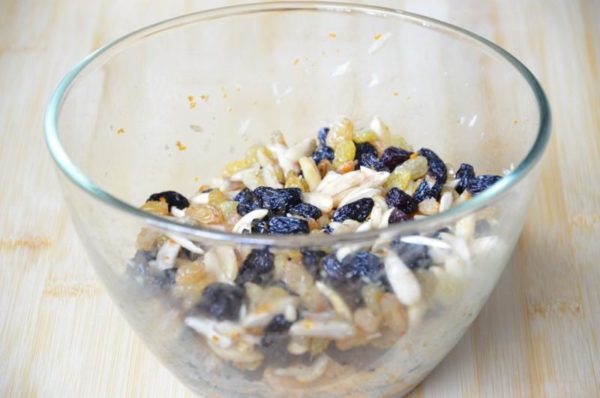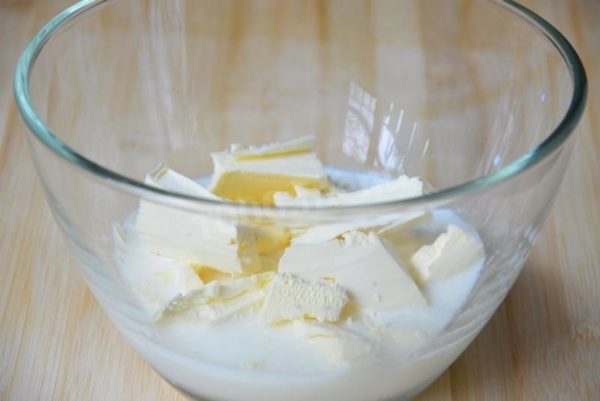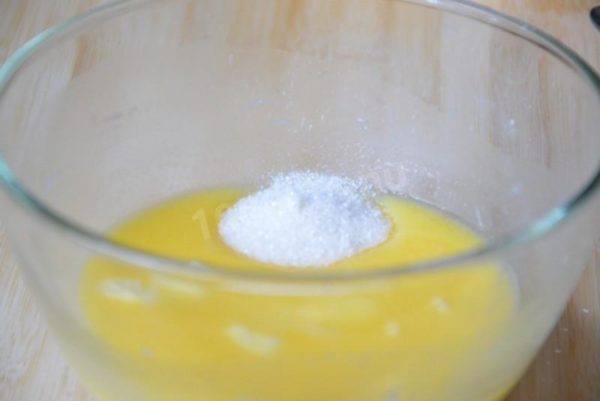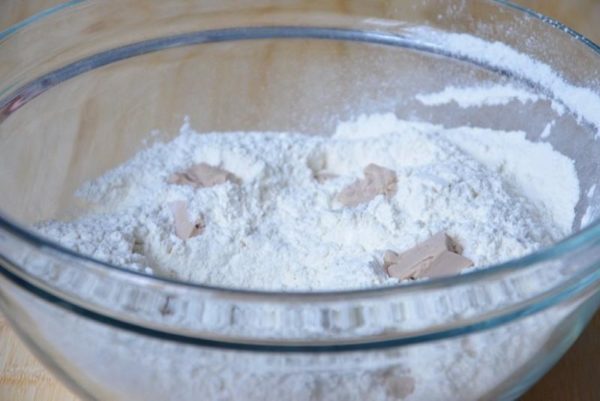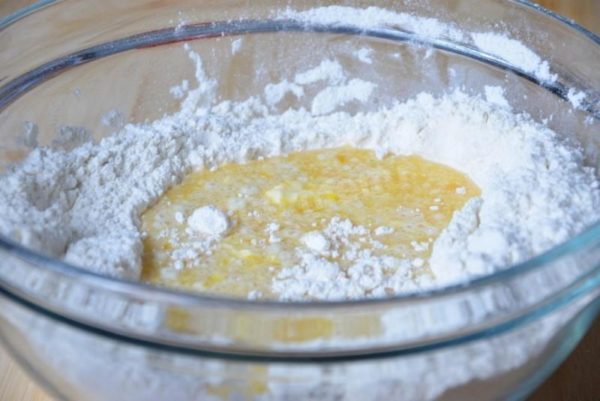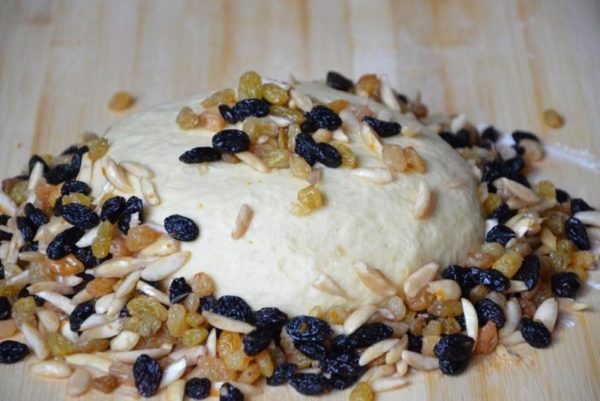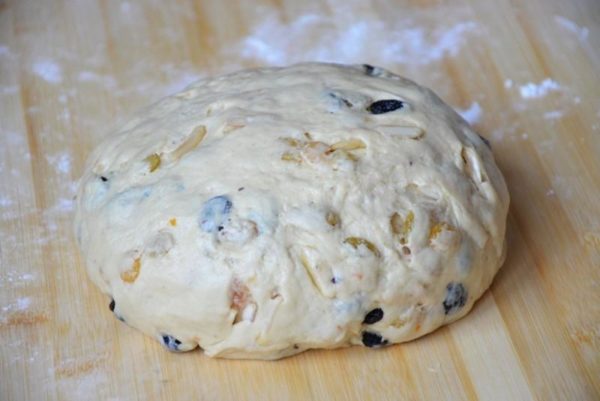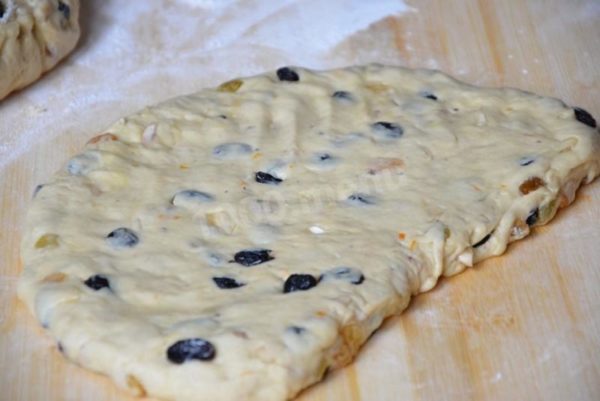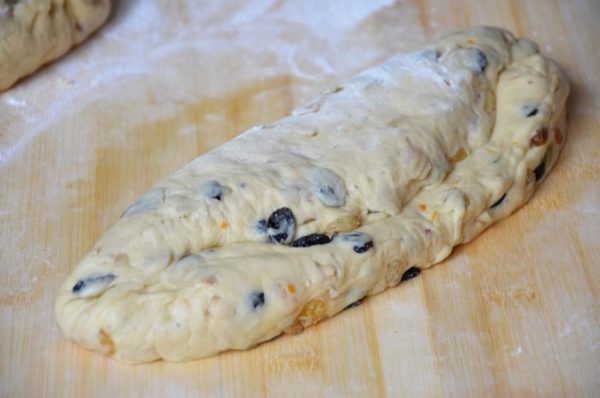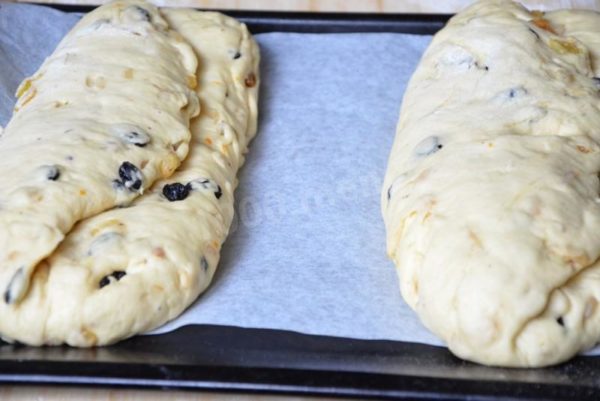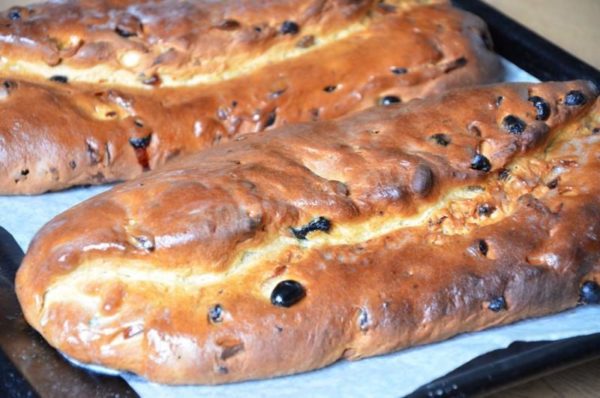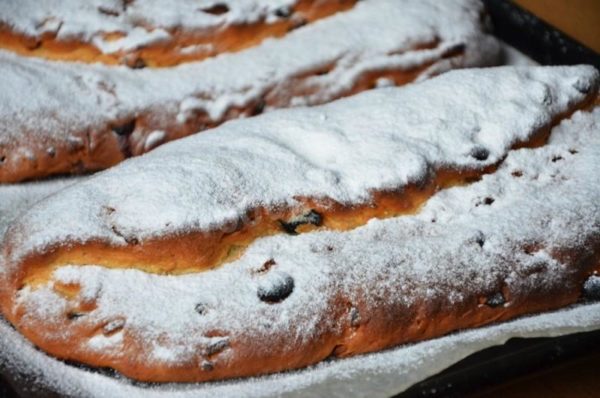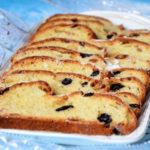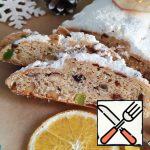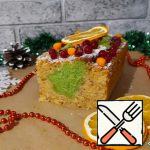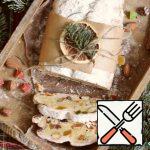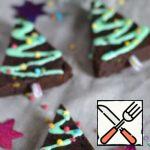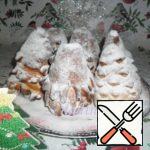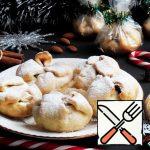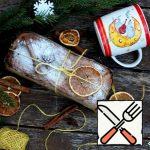| Prep Time | 15 minutes |
| Cook Time | >4 days |
| Passive Time | 4 days |
| Servings |
- 500 gram Wheat flour / Flour
- 200 milliliters Milk
- 100 gram Sugar
- 300 gram Butter 200 gram for the dough, 100 gram for greasing the finished stollen
- 1 pieces Egg yolk
- 30 gram Yeast
- 200 gram Powdered sugar
- 300 gram Raisin some of the raisins can be replaced with candied fruits
- 150 gram Almond Purified
- 30 milliliters Cognac
- 1 teaspoon Orange zest
- 1 teaspoon Vanilla tincture or sugar
Ingredients
|
- How to bake a Christmas stollen? To start, soak the raisins, peeled nuts, and zest in cognac and vanilla tincture in advance (preferably the night before). If you're using vanilla sugar, add it directly to the dough. It's best to blanch almonds to remove the skins, as the nut shells can impart bitterness. To do this, pour hot boiling water over the nuts and let them sit for 10-15 minutes. The nut shells will swell and can then be easily removed by hand.
- Sift the flour and add fresh yeast, mixing them with the flour until they form fine crumbs. If you're using yeast that you're not familiar with, it's a good idea to activate it to ensure it's viable. To do this, dissolve the yeast in 100 ml of warm water, add 1 tsp of sugar, and let the mixture sit for 15 minutes. If a foamy cap appears on the surface after this time, the yeast is good; if there's no foam, there's a high likelihood that the yeast is weak or no longer active.
Be prepared for the fact that you may need more or less flour than indicated in the recipe. Focus not on the precise amount of flour, but rather on achieving the desired consistency of the dough.
Keep in mind that everyone's ovens are different, so the temperature and cooking time may vary from what's stated in the recipe.
Sifting the flour is crucial to aerate it and ensure that your baked goods turn out light and rise properly during baking.
For melting butter, you have two options:
Microwave Method: Cut the butter into small pieces and place them in a microwave-safe container. To prevent splattering, cover the container with a paper towel. Melt the butter at the lowest power setting or use the defrost mode. Start with short intervals, such as five seconds, and check if the butter has melted. If not, repeat the process in 5-second increments until you achieve the desired result.
Water Bath Method: You'll need two containers of different sizes. Pour water into the larger container and place it on the stove to heat. Position the smaller container on top so that it's partially immersed in the water. Add the sliced butter to the smaller container. As the water heats and boils, it will gently melt the butter. Stir the butter occasionally to expedite the melting process. Once all the butter pieces have completely dissolved, remove the container from the stove.

